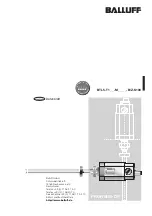
One disadvantage of direct sequence systems is that due to design issues related to broadband transmitters and receiv-
ers, they generally employ only a minimal amount of spreading, often no more than the minimum required by the regulat-
ing agencies. For this reason, the ability of DSSS systems to overcome fading and in-band jammers is relatively weak. By
contrast, FHSS systems are capable of hopping throughout the entire band, statistically reducing the chances that a
transmission will be affected by fading or interference. This means that a FHSS system will degrade gracefully as the
band gets noisier, while a DSSS system may exhibit uneven coverage or work well until a certain point and then give out
completely.
Because it offers greater immunity to interfering signals, FHSS is often the preferred choice for co-located systems. Since
direct sequence signals are very wide, they can offer only a few non-overlapping channels, whereas multiple hoppers can
interleave, minimizing interference. Frequency hopping systems do carry some disadvantages, in that they require an ini-
tial acquisition period during which the receiver must lock on to the moving carrier of the transmitter before any data can
be sent, which typically takes several seconds. In summary, frequency hopping systems generally feature greater cover-
age and channel utilization than comparable direct sequence systems. Of course, other implementation factors such as
size, cost, power consumption and ease of implementation must also be considered before a final radio design choice can
be made.
2.0 DNT24 System Overview
A DNT24 radio can be configured to operate in one of three modes -
base, remote
or
router
. A
base
controls a DNT24
system
, and interfaces to an application
host
such as a PC or Internet gateway. A
remote
functions to transmit or receive
serial, digital (state) and analog data. A
router
alternates between functioning as a
remote
on one hop and a
network base
on the next hop. When acting as a remote, the router stores messages it receives from its
parent,
and then repeats the
messages to its
child
radios when acting as a network base. Likewise, a router will store messages received from its child
radios when acting as a base, and repeat them to its parent when acting as a remote. Any message addressed directly to
a router is processed by the router rather than being repeated.
2.1 Point-to-Point Systems
A DNT24
system
contains at least one
network
. The simplest DNT24 topology is a point-to-point system, as shown in Fig-
ure 2.1.1. This system consists of a base and one remote forming a single network. Point-to-point systems are often used
to replace wired serial connections. Point-to-point systems are also used to transmit switch positions or analog signals
from one location to another.
Figure 2.1.1
©2009-2014 by Murata Electronics N.A., Inc.
DNT24 Integration Guide R2.0 - 10/27/14
www.murata.com
Содержание DNT24 Series
Страница 79: ...Figure 10 3 2 2009 2014 by Murata Electronics N A Inc DNT24 Integration Guide R2 0 10 27 14 www murata com...
Страница 80: ...Figure 10 3 3 2009 2014 by Murata Electronics N A Inc DNT24 Integration Guide R2 0 10 27 14 www murata com...
Страница 82: ...2009 2014 by Murata Electronics N A Inc DNT24 Integration Guide R2 0 10 27 14 www murata com...
Страница 83: ...2009 2014 by Murata Electronics N A Inc DNT24 Integration Guide R2 0 10 27 14 www murata com...










































